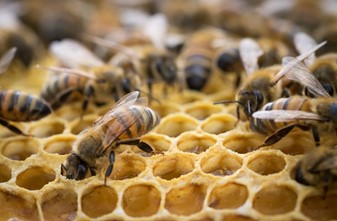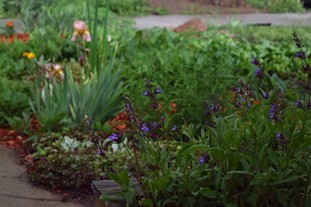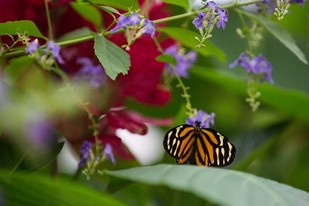Butterfly Pavilion and Greeley Honey Producer Collaborate on Beehive Project
 Flickr/Pierre Grand
Flickr/Pierre Grand
Bees and other pollinators are a crucial part of the Colorado ecosystem.
Behind every spoonful of honey is a story — a culmination of miles logged and flowers tapped for pollen. A single teaspoon is the life’s work of a dozen bees, and serves as a reminder of the interconnectivity between plants and the little insects who pollinate them.
To showcase the special nature of these relationships, the Butterfly Pavilion and a Colorado-based honey producer recently teamed up to create a batch of 200 twelve-ounce bottles of limited-edition, raw, unfiltered honey. The proceeds will be donated to the Pavilion’s PACE program, which teaches the importance of pollinators and promotes habitat and species conservation. The Butterfly Pavilion is the first stand-alone, nonprofit invertebrate zoo accredited by the Association of Zoos and Aquariums. The Greeley-based honey producer, Local Hive, has been around for 96 years.
The Butterfly Pavilion and Local Hive collaborated to create honey made by Denver metro area bees.
“This is a really special honey because it comes from Butterfly Pavilion’s hives here in the Denver area,” says Mario Padilla, the facility’s director of animal collections and head beekeeper. The hives are located at farms, parks, hotels and businesses around the city such as Arvada Family Farm, Mountair Park (in Lakewood) and the Westminster Marriott. But even hobbyists can sign up to host a hive. You can also rent a hive from the Butterfly Pavilion, which includes hive maintenance, bees, equipment and twenty bottles of honey. (Contact Padilla at mpadilla@butterflies.org for details.)
The Butterfly Pavilion is the kind of organization Local Hive likes to work with. “Local Hive is passionate about supporting local honey and local beekeepers, and the partnership with Butterfly Pavilion and the PACE initiative is one really impactful way we’re able to give back,” says Tony Landretti, Local Hive’s CEO.
Those thirty Butterfly Pavilion hives support about 1.5 million bees, and the 287 pounds of harvested honey were created with the pollen from approximately 574 million flowers. That figure is according to the National Honey Board, an industry-funded agriculture promotion group, which has found that it takes 2 million flowers to produce a single pound of honey.
The Butterfly Pavilion looks out for bees as well as butterflies.
This habitat of flowers and the ecosystems that sustain them create the unique flavors, textures and colors of local honey. But even more important, those ecosystems help bees thrive, and bees help plants reproduce and bear fruit. According to the U.S. Department of Agriculture, “Pollinators, most often honey bees, are responsible for one in every three bites of food we take.
________________________________________________________________________________











